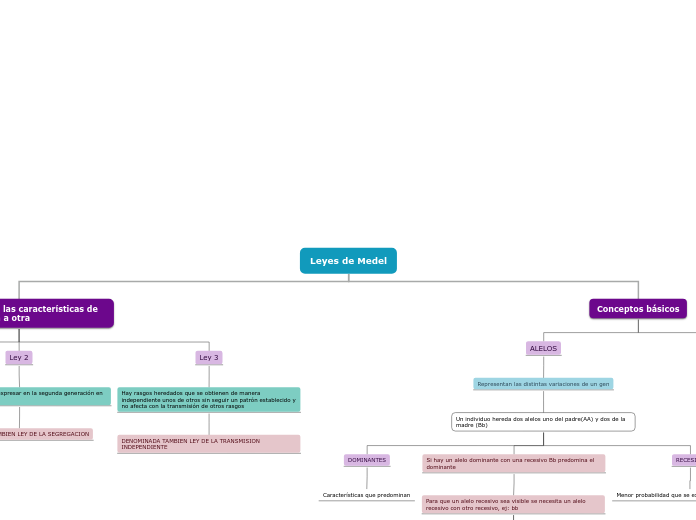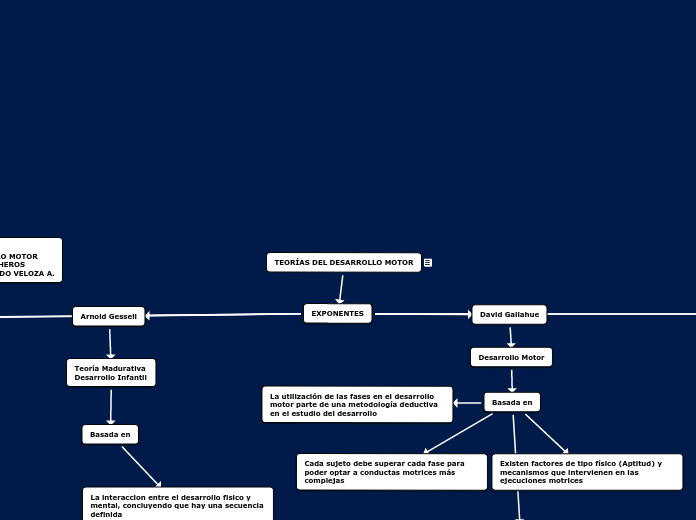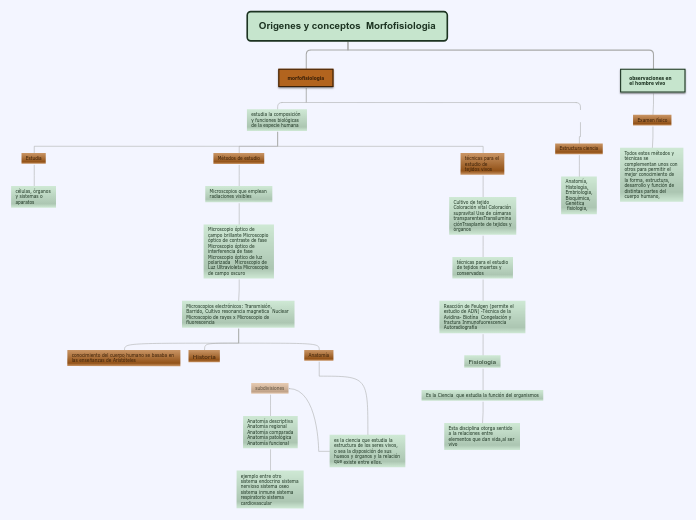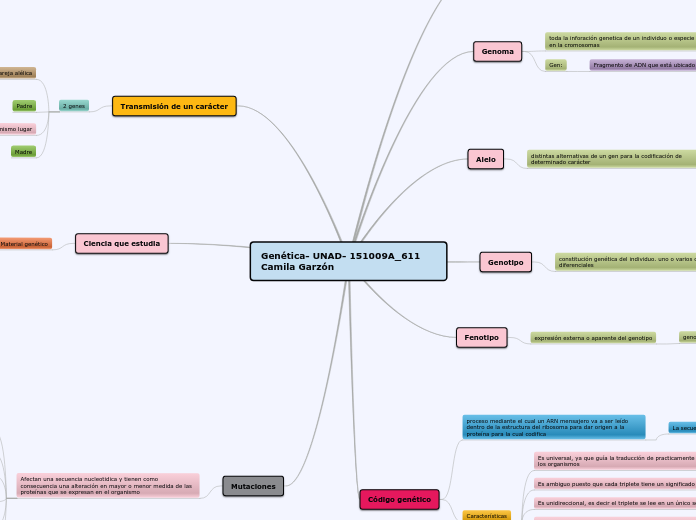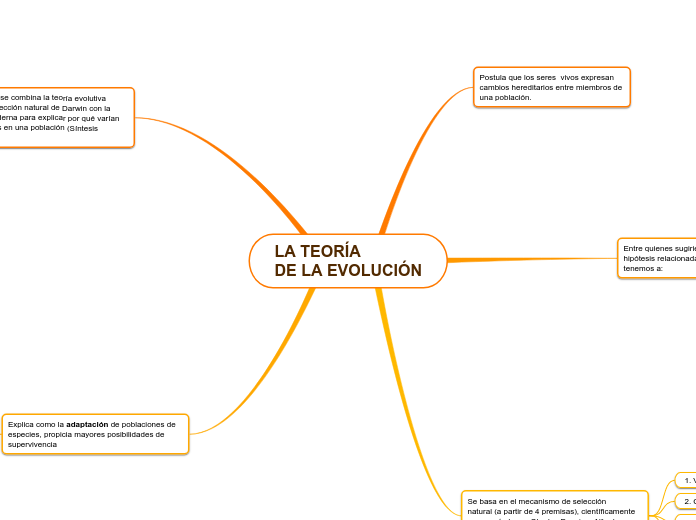Leyes de Medel
Type in the name of the multiple-perspectives text.
Example: Bridge to Terabithia by Katherine Paterson
Conceptos básicos
GENOTIPO
Información que no se puede ver a simple vista porque se encuentra en los genes
FENOTIPO
How is the viewpoint introduced in the story?
Choose an answer:
First person point of viewSecond person point of viewThird person point of viewOmniscient point of view
Características físicas que podemos ver a simple vista
ALELOS
Representan las distintas variaciones de un gen
Type in a relevant quote that highlights the character's point of view towards
Conceptos básicos.
Try following a citation format: author's name, chapter, and page.
Example: 'Jesse drew the way some people drank whiskey. (...) Lord, he loved to draw. (...) When he was in first grade, he told his father that he wanted to be an artist when he grew up.' (Paterson, 2. 7)
Un individuo hereda dos alelos uno del padre(AA) y dos de la madre (Bb)
RECESIVO
Menor probabilidad que se exprese esa característica
Si hay un alelo dominante con una recesivo Bb predomina el dominante
Para que un alelo recesivo sea visible se necesita un alelo recesivo con otro recesivo, ej: bb
Heterocigoto
Ambos alelos son diferentes
Homocigoto
Ambos alelos son iguales
DOMINANTES
Características que predominan
Transmisión de las características de una generación a otra
Identify an important issue from the text that is being presented from different angles. Type it in.
Example: Jesse's drawing talent.
Ley 3
Whose character does the third point of view belong to?
Type in his/her name.
Example: Mr. Aarons, Jesse's father.
Hay rasgos heredados que se obtienen de manera independiente unos de otros sin seguir un patrón establecido y no afecta con la transmisión de otros rasgos
What does the character think, say or do that suggests their perspective on the issue?
Type in a quote and try to maintain the citation format.
Example: 'He would like to show his drawings to his dad, but he didn't dare. (...) He'd thought his dad would be pleased. He wasn't. What are they teaching in that damn school? he had asked.' (Paterson, 2.8)
DENOMINADA TAMBIEN LEY DE LA TRANSMISION INDEPENDIENTE
Ley 2
Decide on the second point of view
Name the character (it can either be the main character or one of the supporting characters) whose point of view you are presenting.
Example: Miss Edmunds, Jesse's music teacher.
El gen recesivo se va a expresar en la segunda generación en una proporción 3:1
Type in a quote that points out the character's position about the issue.
Try to follow a citation format: author's name, chapter, and page.
Example: 'She said he was unusually talented, and she hoped he wouldn't let anything discourage him.' (Paterson, 2. 8)
DENOMINADA TAMBIEN LEY DE LA SEGREGACION
Ley 1
Decide on the first point of view you are going to present.
Type in the name of the character (it can either be the main character or one of the supporting characters) whose point of view belongs to.
Example: Jesse Oliver Aarons, Jr., the main character of the novel, a fifth-grader living in a rural Southern area.
Al cruzar dos individuos de raza pura, toda su descendencia en la primera generación será fenotípicamente y genotípicamente igual
Type in a relevant quote that highlights the character's point of view towards
Transmisión de las características de una generación a otra.
Try following a citation format: author's name, chapter, and page.
Example: 'Jesse drew the way some people drank whiskey. (...) Lord, he loved to draw. (...) When he was in first grade, he told his father that he wanted to be an artist when he grew up.' (Paterson, 2. 7)
Raza pura: alelos iguales, ya sean dominantes (AA) o recesivos (aa)
What type of narration introduces the viewpoint?
Choose an answer:
First person point of view - using the personal pronouns 'I' or 'we'Second person point of view - using the personal pronoun 'you'Third person point of view - using the third-person pronouns 'he', 'she' and 'they'Omniscient point of view - an all-seeing observer tells the story
DENOMINADA TAMBIEN LEY DE LA UNIFORMIDAD
